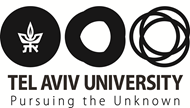
Prof. Dalit Ben-Yosef
Fragile X syndrome (FXS) is the main genetic cause for mental retardation. Neurodevelopmental disorders, such as FXS often involve multiple cell types and molecular pathways. In this regard, FXS is still poorly understood. Previously we demonstrated the value of neural differentiation of human embryonic stem cells (hESCs) carrying the natural FXS mutation as a powerful human in vitro model for unraveling the mechanism of FXS. We derived hESC lines with the FX mutation following genetic diagnosis in our IVF lab. We are differentiating these FX-hESCs to functional neurons and perform molecular and electrophysiological analysis to study their impaired function in a way that may explain the development of mental retardation. Our robust platform based on neural differentiation of diseased hESCs combined with RNA sequencing of thousands of single neural cells will enable us to explore the molecular and functional basis for FXS pathology, and will potentially serve as a more reliable human preclinical drug screening model.
Brain Disorders Research
Cellular & Molecular Neuroscience
Neurodevelopment and Neurogenetic Research
- Preisler L, Ben-Yosef D, Mayshar Y. APC as a major regulator of hESCs self-renewal. Stem Cells. 2019
- Telias M, Segal M, Ben-Yosef D. Functional Deficiencies in Fragile X Neurons Derived from Human Embryonic Stem Cells. Journal of Neuroscience, 2015
- Telias M, Mayshar Y, Amit A, Ben-Yosef D. Molecular mechanisms regulating impaired neurogenesis of fragile X syndrome human embryonic stem cells. Stem Cells and Development, 2015
- Shpiz A, Kalma Y, Frumkin T, Telias M, Carmon A, Amit A, Ben-Yosef D. Human embryonic stem cells carrying an unbalanced translocation demonstrate impaired differentiation into trophoblasts: an in vitro model of human implantation failure. Molecular Human Reproduction, 2015
- Amir A, Barbash-Hazan S, Kalma Y, Frumkin T, Malcov M, Samara N, Hasson J, Reches A, Azem F, Ben-Yosef D. Time-lapse imaging reveals delayed development of embryos carrying unbalanced chromosomal translocations. Journal of Assisted Reproduction and Genetics . 2016

